I begin during the leg of the tour that took us to Griffith in New South Wales (NSW), a part of the country that can produce almost any crop due to its abundance of heat and water.
One of the things you had to notice travelling outside of Griffith was the miles and miles of plantation along the roadside.
Much of this was for the production of nuts, of which almonds were the most common, especially on the recent plantations.
On a farm close to Griffith, we met with Chris, who worked for one of the big almond production companies in Australia.
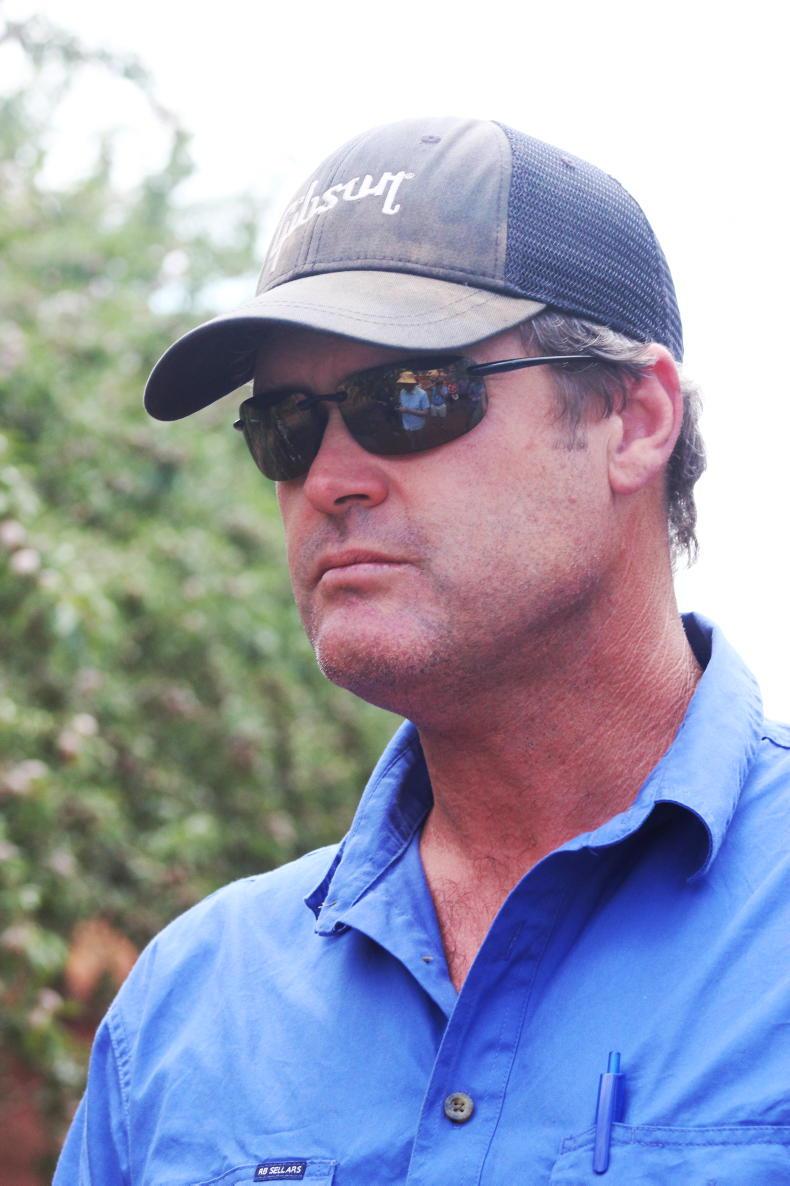
Chris explained the basic principles of almond production and marketing.
They produced around 750ha of almonds there and a much greater area in Tasmania.
“It’s all about water,” Chris said. “The soil around Griffith suits horticulture and nuts - and water is available through irrigation.”
However, Chris was keen to keep Australian production in perspective. Australia is quite a small player in global almond production.
“The US replants more almonds every year then Australia grows in total,” he stated.
Basic almond information
While we in Ireland are unlikely to revert to almond production anytime soon, it is interesting to know the basics of production.
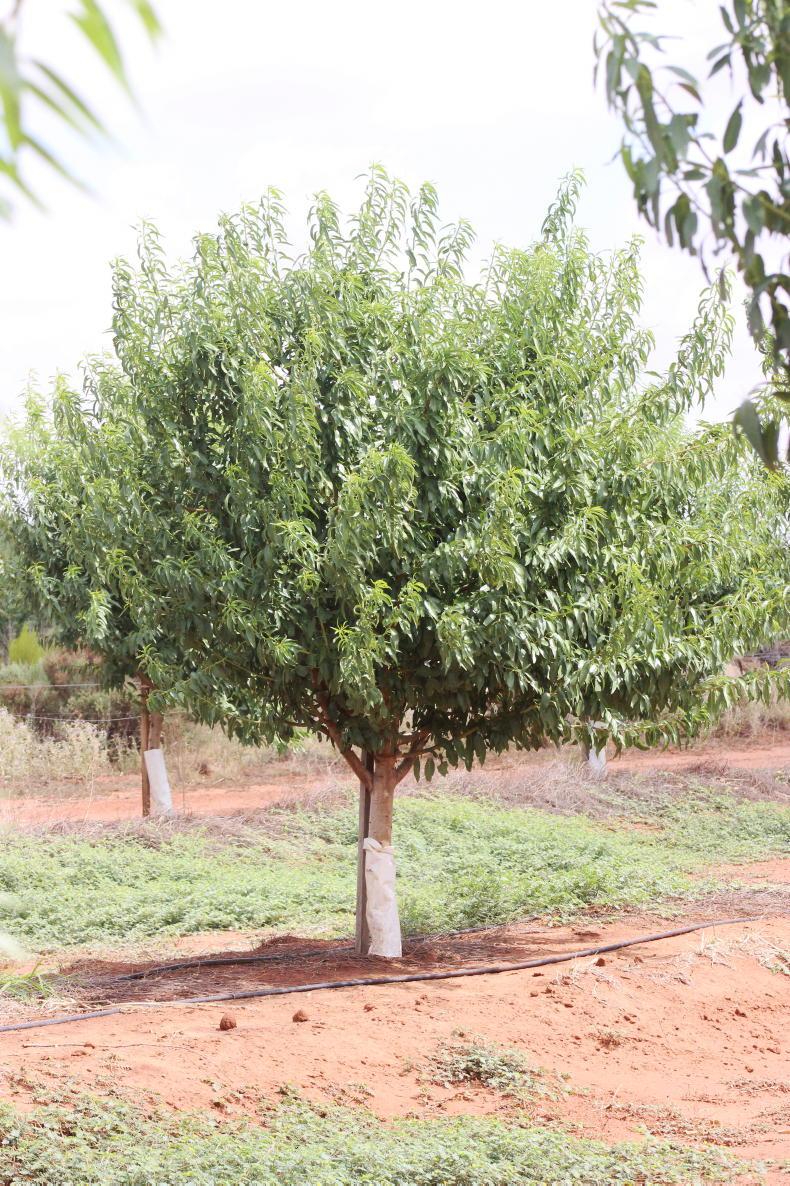
A moderately mature almond tree.
Firstly, they need water, and they love heat. The life of a plantation is around 25-plus years, with some varieties able to persist for longer than that.
Almonds grow on trees and the trees are planted on ridges, partly for drainage and partly for harvesting. They have a big root system, but they still need regular water.
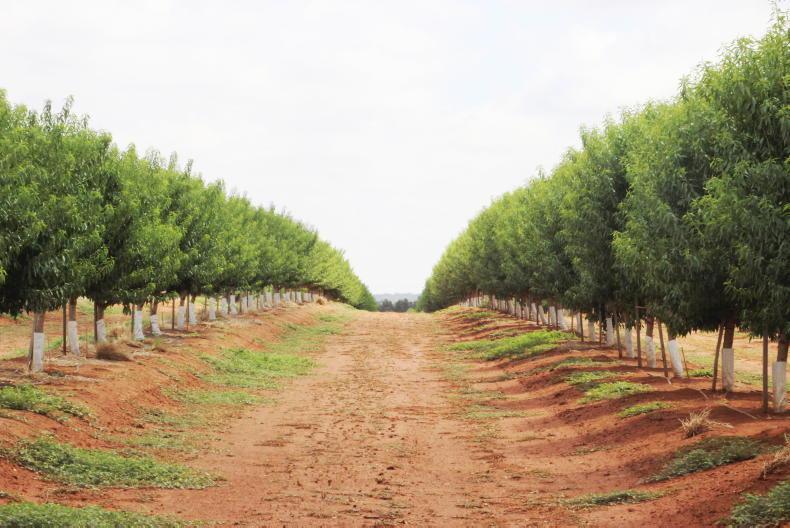
Almond trees are sown on ridges and the space between them is used to mature the fallen nuts and for harvesting.
The plantation we visited had water supplied along the top of the ridges via drip hoses.
Bees are important for the pollination of the flowers that produced the nuts. Almonds give a return on the planting investment in less than seven years, Chris stated.
One of the interesting elements of the crop is that there is no waste. The nuts grow within a casing of hull, which begins to crack to expose the nut around the time of harvest, quite like a chestnut.
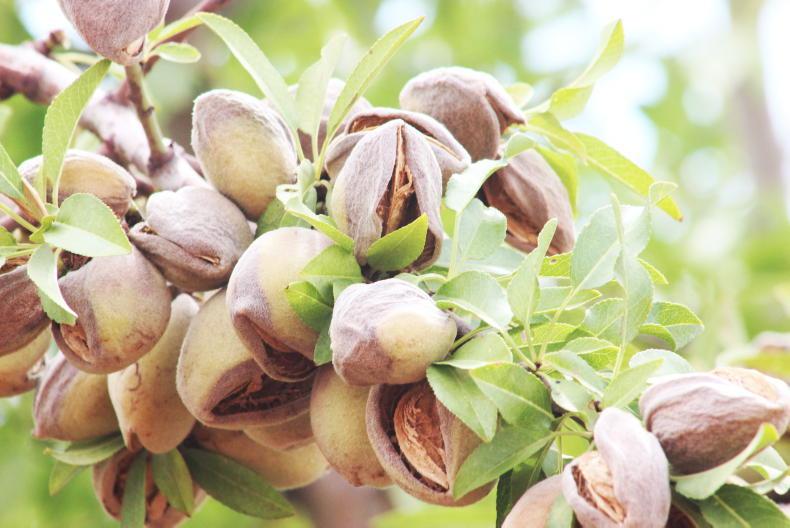
The almond hulls begin to crack open and dry out ahead of the stage to shake them off the trees for harvest.
At the processor, the hulls around the nuts are removed and sent for stock feed.
The nuts that remain entire or unbroken can go to a range of markets and are the highest value output. Broken nuts go into a separate output stream and are destined for the confectionery industry.
Harvesting
Harvesting is interesting. It involves shaking the trees and the ripe nuts fall to the ground.
Having the ridges helps to get the nuts out from around the tree to get it accessible for harvesting.
The nuts are left on the ground for a few days to allow them to mature and dry out and then they are windrowed using a sweeper rather than a rake.
The windrows are then picked up using a Webster harvester. The crop is then moved, either to a stockpile or to the processor.
The harvesting process in any orchard takes place on a number of occasions for about a month.
Valuable
When we visited in January 2020, the price of almonds was AUS$7/kg (€4.40/kg).
Given that the crop yield is around 4t/ha, the crop can be quite lucrative. Indeed, almonds had been worth up to $11/kg (€6.88/kg).
Such is the value of the crop and the importance of water that the company had recently built a new 20ha water storage dam in the area.
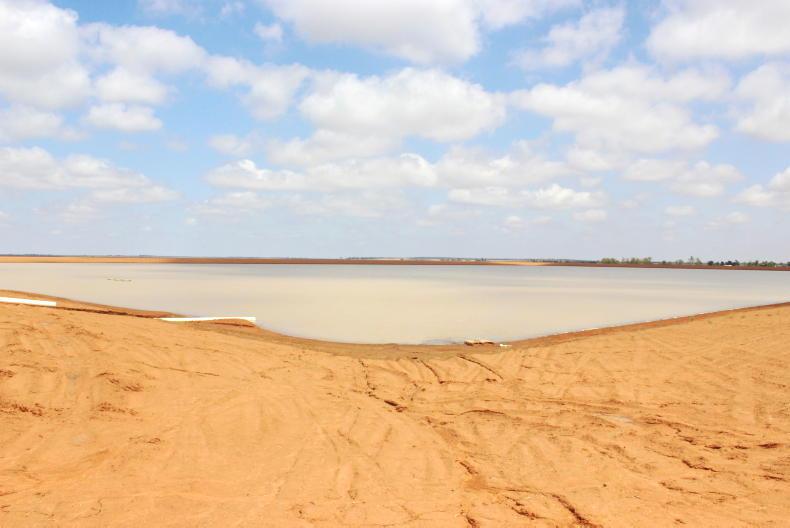
The 20ha lagoon which was recently built to provide water for crop irrigation.
Alongside this, they have also installed a new pumping and filtration system to help ensure the availability of water for the crop.
Macadamia nuts
Staying with nuts and moving north to Queensland, macadamias was the crop that was getting a lot of interest in recent years.
I must say that my notes are scarcer than sketchy on the crop, because it just seemed so highly unlikely to be of any relevance to us.

A young macadamia plantation showing the space between the rows and the drip irrigation system running on the top of the planted ridge.
What I can recall is that the drive to plant the crop had escalated the price of land.
As with almonds, it takes a few years to get the crop to a productive stage, but, at that point, that same land would become very valuable.
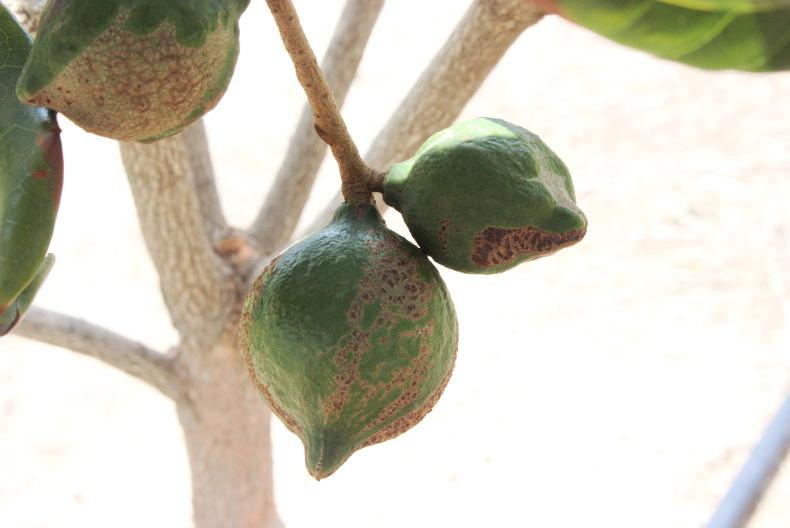
Developing macadamia nuts on young tree in Queensland.
The nut harvesting process is broadly similar to almonds, except that the nuts fall naturally from the trees.
Then they are windrowed and then collected.
The yield was given at around 8kg/tree in the early years, but that increases with time.
I begin during the leg of the tour that took us to Griffith in New South Wales (NSW), a part of the country that can produce almost any crop due to its abundance of heat and water.
One of the things you had to notice travelling outside of Griffith was the miles and miles of plantation along the roadside.
Much of this was for the production of nuts, of which almonds were the most common, especially on the recent plantations.
On a farm close to Griffith, we met with Chris, who worked for one of the big almond production companies in Australia.

Chris explained the basic principles of almond production and marketing.
They produced around 750ha of almonds there and a much greater area in Tasmania.
“It’s all about water,” Chris said. “The soil around Griffith suits horticulture and nuts - and water is available through irrigation.”
However, Chris was keen to keep Australian production in perspective. Australia is quite a small player in global almond production.
“The US replants more almonds every year then Australia grows in total,” he stated.
Basic almond information
While we in Ireland are unlikely to revert to almond production anytime soon, it is interesting to know the basics of production.

A moderately mature almond tree.
Firstly, they need water, and they love heat. The life of a plantation is around 25-plus years, with some varieties able to persist for longer than that.
Almonds grow on trees and the trees are planted on ridges, partly for drainage and partly for harvesting. They have a big root system, but they still need regular water.

Almond trees are sown on ridges and the space between them is used to mature the fallen nuts and for harvesting.
The plantation we visited had water supplied along the top of the ridges via drip hoses.
Bees are important for the pollination of the flowers that produced the nuts. Almonds give a return on the planting investment in less than seven years, Chris stated.
One of the interesting elements of the crop is that there is no waste. The nuts grow within a casing of hull, which begins to crack to expose the nut around the time of harvest, quite like a chestnut.

The almond hulls begin to crack open and dry out ahead of the stage to shake them off the trees for harvest.
At the processor, the hulls around the nuts are removed and sent for stock feed.
The nuts that remain entire or unbroken can go to a range of markets and are the highest value output. Broken nuts go into a separate output stream and are destined for the confectionery industry.
Harvesting
Harvesting is interesting. It involves shaking the trees and the ripe nuts fall to the ground.
Having the ridges helps to get the nuts out from around the tree to get it accessible for harvesting.
The nuts are left on the ground for a few days to allow them to mature and dry out and then they are windrowed using a sweeper rather than a rake.
The windrows are then picked up using a Webster harvester. The crop is then moved, either to a stockpile or to the processor.
The harvesting process in any orchard takes place on a number of occasions for about a month.
Valuable
When we visited in January 2020, the price of almonds was AUS$7/kg (€4.40/kg).
Given that the crop yield is around 4t/ha, the crop can be quite lucrative. Indeed, almonds had been worth up to $11/kg (€6.88/kg).
Such is the value of the crop and the importance of water that the company had recently built a new 20ha water storage dam in the area.

The 20ha lagoon which was recently built to provide water for crop irrigation.
Alongside this, they have also installed a new pumping and filtration system to help ensure the availability of water for the crop.
Macadamia nuts
Staying with nuts and moving north to Queensland, macadamias was the crop that was getting a lot of interest in recent years.
I must say that my notes are scarcer than sketchy on the crop, because it just seemed so highly unlikely to be of any relevance to us.

A young macadamia plantation showing the space between the rows and the drip irrigation system running on the top of the planted ridge.
What I can recall is that the drive to plant the crop had escalated the price of land.
As with almonds, it takes a few years to get the crop to a productive stage, but, at that point, that same land would become very valuable.

Developing macadamia nuts on young tree in Queensland.
The nut harvesting process is broadly similar to almonds, except that the nuts fall naturally from the trees.
Then they are windrowed and then collected.
The yield was given at around 8kg/tree in the early years, but that increases with time.










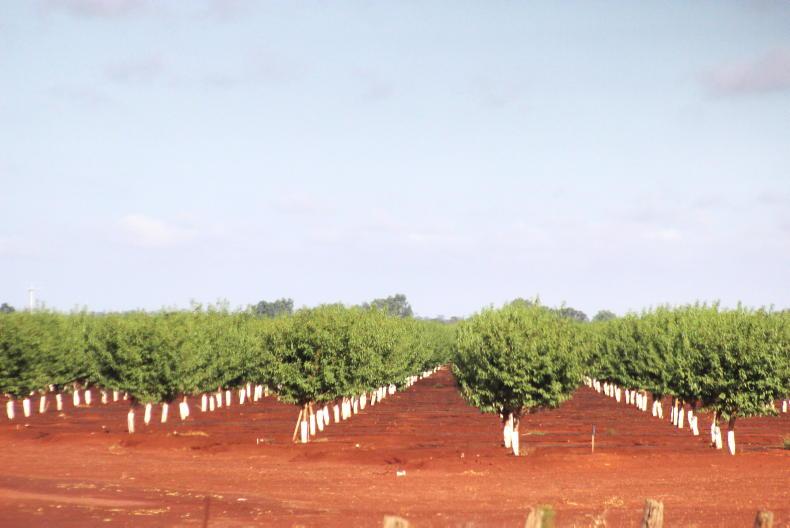

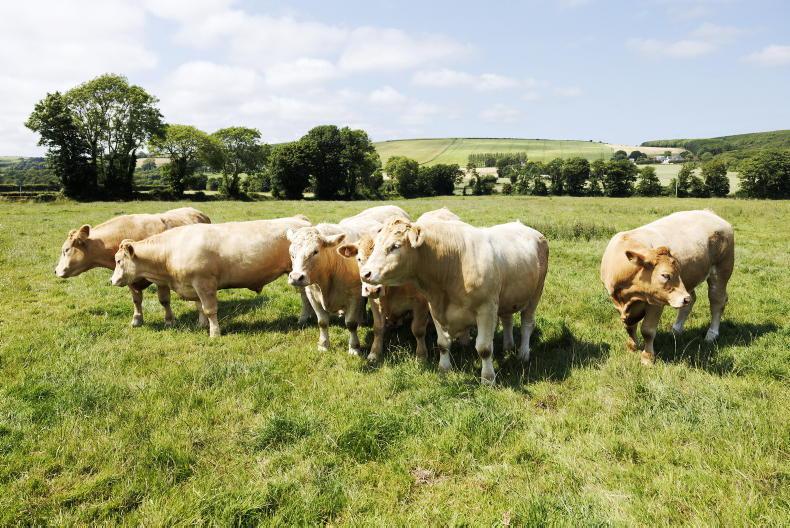

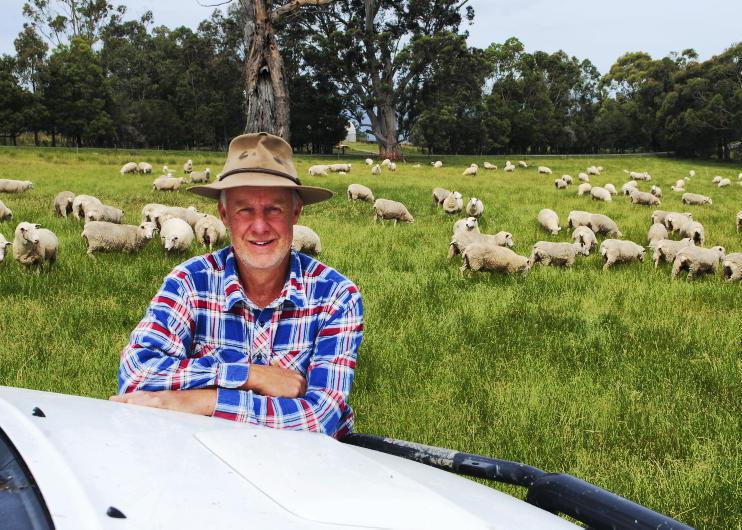

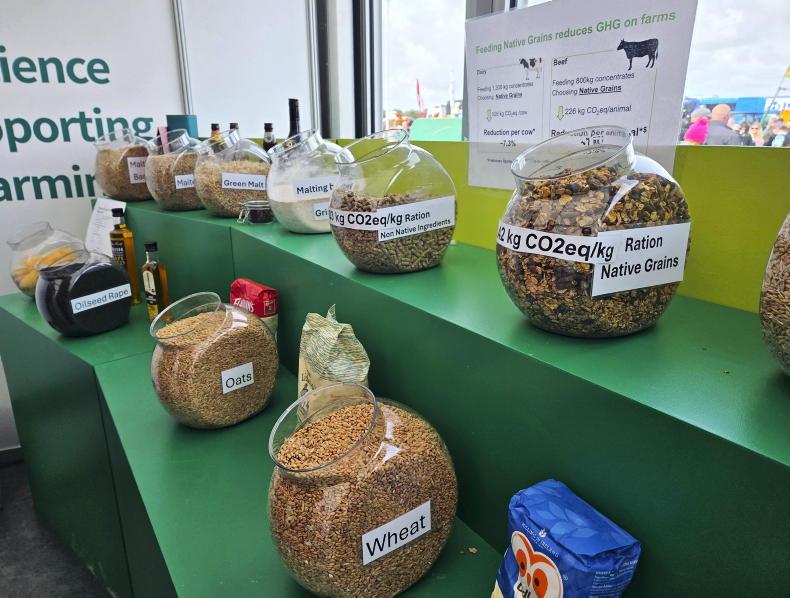
SHARING OPTIONS